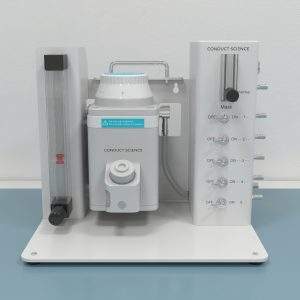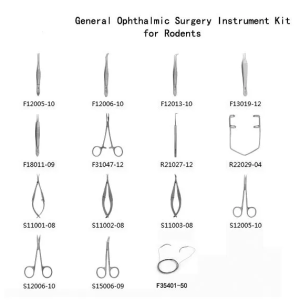$990.00
The Ant Y-maze, as its name implies, features a Y-shaped structure with two symmetrical arms and a central longitudinal section. In Y-maze experiments, ants navigate between the arms based on their olfactory memory. This setup facilitates experiments with freely roaming ants, enabling detailed observation of individual behaviors. For studies involving colony-level foraging behavior in ants, Mazeengineers offers advanced setups like the Ant Colony Maze and the Ant Double Bifurcation T, with options for customization upon request.

MazeEngineers empowers preclinical neuroscience research with meticulously designed, customizable behavioral apparatuses. From manual classic mazes to fully automated smart systems, we provide the tools scientists need to capture high-quality, reproducible data for studies on learning, memory, anxiety, and depression.


bool(false)

Features |
Height: 1.9cm |
Entrance channel length: 8cm |
Arm Length: 6cm |
90 degree arms |
Base size: 13.5cm x 14.5 cm |
Leg height: 10cm height |
Removable glass plate: 10cm x 15cm |

The Ant Y-maze is instrumental in researching the learning abilities of ants related to navigation and foraging. This apparatus is derived from the conventional Y-Maze used to study cognitive behaviors in rodents. Its two-choice arms are ideal for differential conditioning protocols, enabling ants to distinguish between stimuli. Assessing biological memory in ants serves as a model for understanding cellular and molecular olfactory learning in insects.
Olfactory learning significantly influences ant behaviors such as navigation, defense, socialization, and foraging (Dupuy, Sandoz, Giurfa, & Josens, 2006). Experimentally investigating memory duration and phases necessitates controlling the subjects’ experiences. The Y-maze provides a controlled environment to evaluate short-term and long-term memory characteristics in ants.
The Y-maze consists of a Y-shaped acrylic chamber with one longitudinal entrance channel and two symmetrical arms. Each arm measures 7cm in length and is positioned at a 90-degree angle to each other. The longitudinal section spans 8cm in length, with a height of 1.9cm. The Y-maze is mounted on a rectangular supporting base measuring 13.5cm x 14.5cm. Four 10cm-high acrylic cylinders are attached to the base to facilitate movement of the apparatus during experiments. An acrylic top measuring 10cm x 15cm covers the arms area of the Y-maze. Additionally, air stream connectors are located at the ends of the arms to facilitate airflow during experimentation.
Before and after each experiment, sterilize the Y-maze with alcohol and pass hot, dry air through it. Line the apparatus with fresh filter paper for each subject to prevent residual stimuli from affecting task performance. To direct odors towards the decision area and avoid direct contact with reinforcements, use laminar airflow driven from the back of the goal arms towards the intersection.
For observing ant behavior in the Y-maze, consider using external tracking and recording systems such as Nolde’s Ethovision XT.
Position a sugar source at the intersection of the Y-maze’s two arms. Transport each ant from the nest to the entrance channel of the Y-maze using a cardboard piece. Allow the ant to consume the sucrose solution, then gently transfer it via cardboard to the top of a vertical stick in the foraging area. From there, the ant will navigate back to its nest. After a 5-minute period, the motivated ant will resume foraging and return to the wooden stick, finding its way back to the Y-maze.
Introduce odors into the maze arms using a small filter paper soaked in the odor solution, positioned at the tip of a micropipette. Insert the micropipette through a hole in the floor of the Y-maze goal-arms, taking precautions to prevent odor diffusion. Ensure the tips are inserted approximately 1.5 cm into the entrance of each arm to allow ants to detect the originating odor. Place corresponding reinforcements of each odor 3.5 cm away from the odor tips.
Conduct trials one ant at a time, with a minimum of 16 trials. Vary the positions of odor and reinforcement in a pseudorandom pattern for each trial to prevent subjects from associating rewards with specific arms.
Josens, Eschbach, and Giurfa (2009) investigated olfactory memory in Camponotus fellah ants using a differential conditioning protocol. Two groups of ants, each from different colonies, were reared under controlled environmental conditions with limited feeding. The ants were trained in a Y-maze using odors paired with reinforcements. One group received positive reinforcement (sucrose) with Octanal in one arm and negative reinforcement (quinine) with Limonene in the other arm. The second group received the opposite pairing: positive reinforcement with Limonene and negative reinforcement with Octanal in the Y-maze arms.
After training, the ants were tested for retention without reinforcement either 24 or 72 hours after the last training session. The results indicated that the ants successfully learned to discriminate between odors, retrieving information from long-term memory during retention tests. Importantly, it was concluded that the formation of long-term memory in these ants occurred independently of reinforcement.
Josens et al. (2009) examined the types of associations (excitatory, inhibitory, or both) influencing ants’ selection of odors. They determined the nature of learned associations through two stages. Initially, trained subjects were divided into CS+ and CS- groups. In the first test, both groups were exposed to octanal and limonene in the goal arms of the Y-maze to confirm their learning from the training session. Both groups exhibited a preference for the rewarded odorant.
In the subsequent test, the CS+ group encountered the familiar CS+ octanal in one arm and a novel odor, ‘2-octanone’, in the other arm. Conversely, the CS- group encountered the familiar CS- limonene in one arm and a novel odorant in the other. The results demonstrated that ants can associate odors with rewards (reinforcement) based on their olfactory experiences. The study concluded that olfactory learning establishes excitatory memory that guides ants’ choices, with no observed role of inhibitory memory.
The following parameters can be observed in the Ant Y-Maze task:
The Ant Y-maze is versatile for conducting various olfactory conditioning protocols across different ant species. It effectively assesses both short-term and long-term memory traits using freely moving individual ants. The Y-maze is user-friendly with straightforward assembly, making it easy to handle. Its controlled environment ensures accurate and reproducible results. Test procedures in the Y-maze are efficient, requiring minimal subject training. By enabling the study of individual ant behavior, results remain unaffected by group influences. Studies using the Y-maze lay foundational knowledge for diverse investigations, including genetics, chemoreception, and memory consolidation through protein synthesis.
The use of the Y-maze to study olfactory learning in ants presents challenges in tracking certain key parameters such as intertrial interval, stimulation duration, and stimulus sequence (Menzel & Benjamin, 2013). It is crucial to closely monitor environmental conditions in the Y-maze to prevent any potential interference with ant behavior.
Dupuy, F., Sandoz, J.-C., Giurfa, M., & Josens, R. (2006). Individual olfactory learning in Camponotus ants. Animal Behaviour, 72(5), 1081-1091. doi:10.1016/j.anbehav.2006.03.011
Josens, R., Eschbach, C., & Giurfa, M. (2009). Differential conditioning and long-term olfactory memory in individual Camponotus fellah ants. The Journal of Experimental Biology 212, 1904-1911. doi:10.1242/jeb.030080
Menzel, R., & Benjamin, P. (2013). Invertebrate Learning and Memory. London, England: Academic Press.
There are no questions yet. Be the first to ask a question about this product.